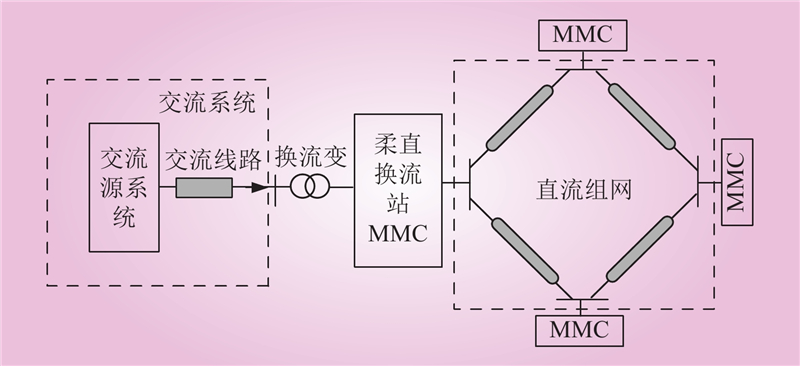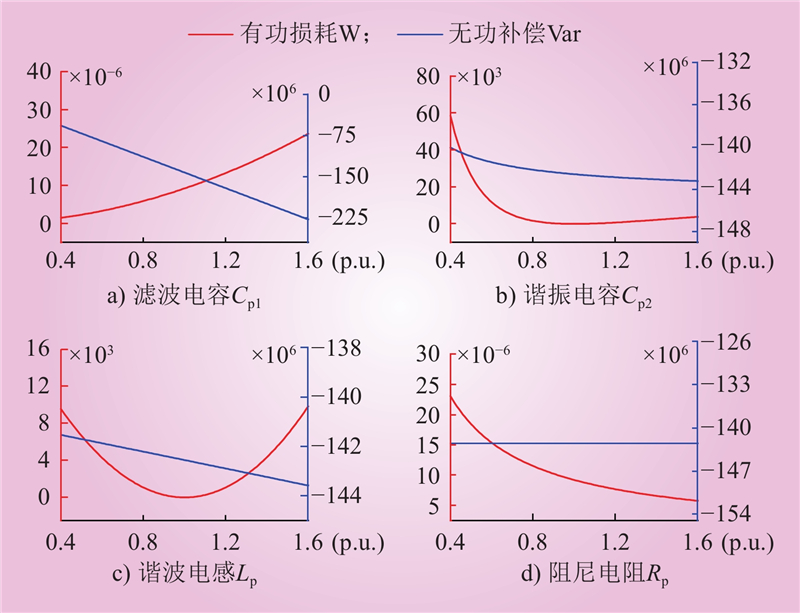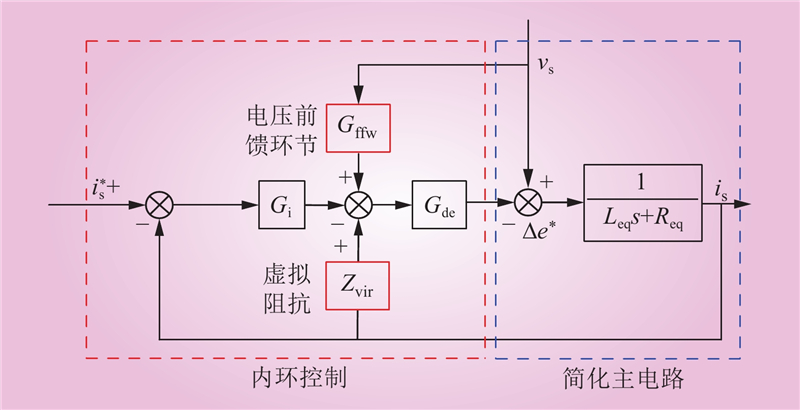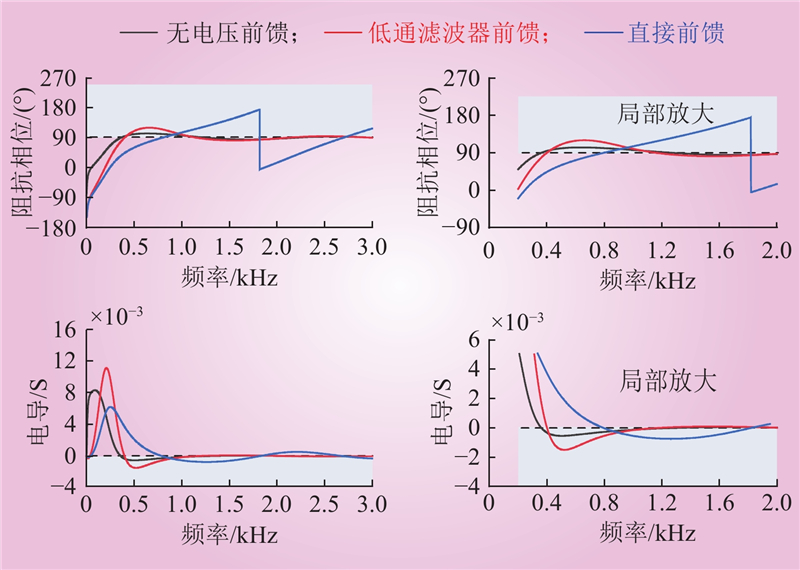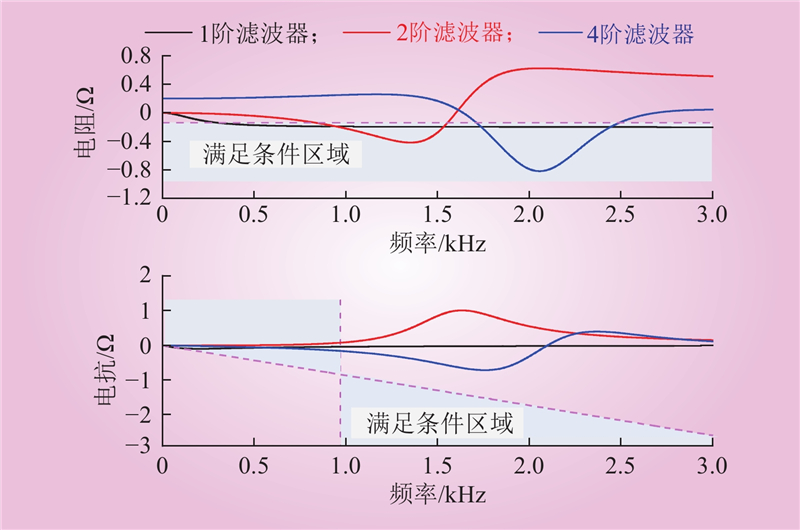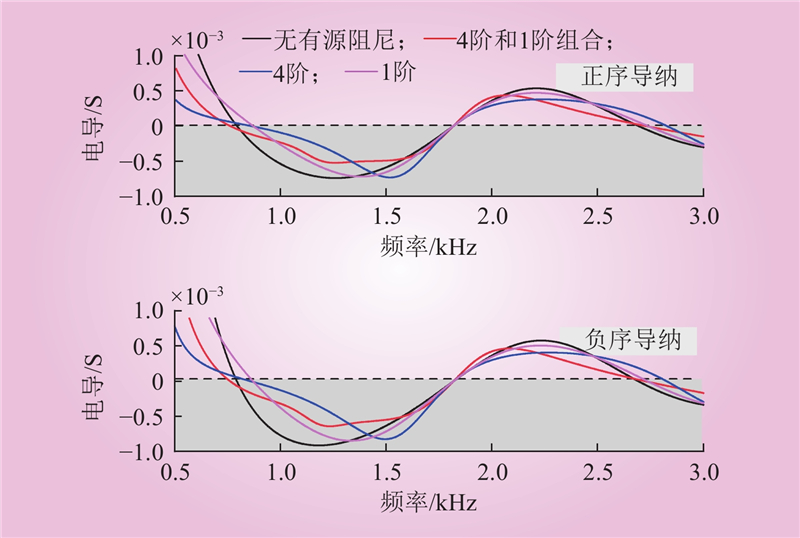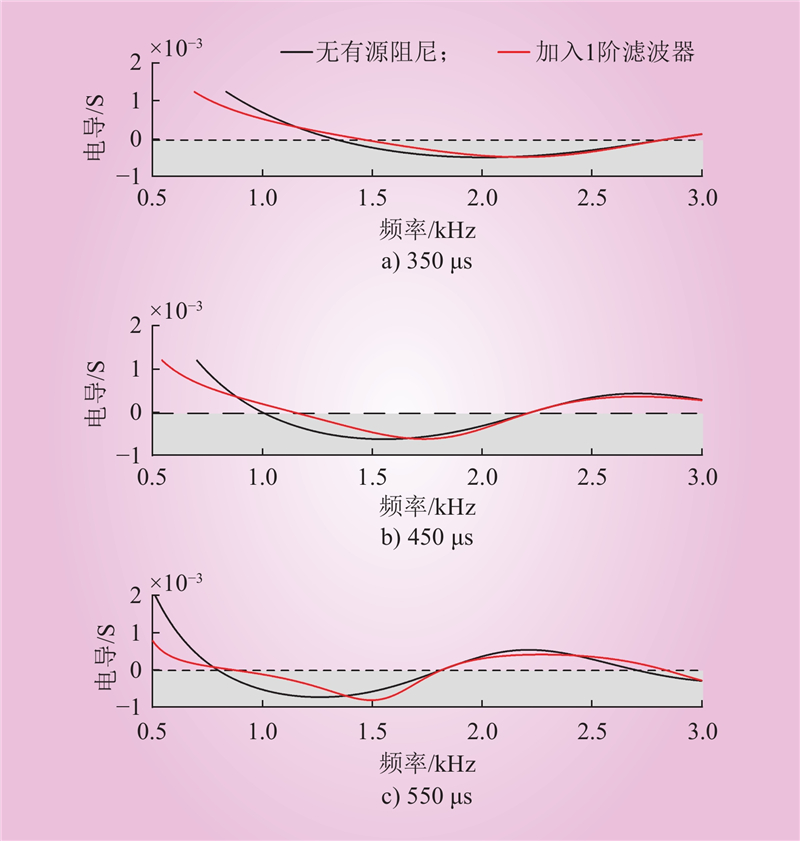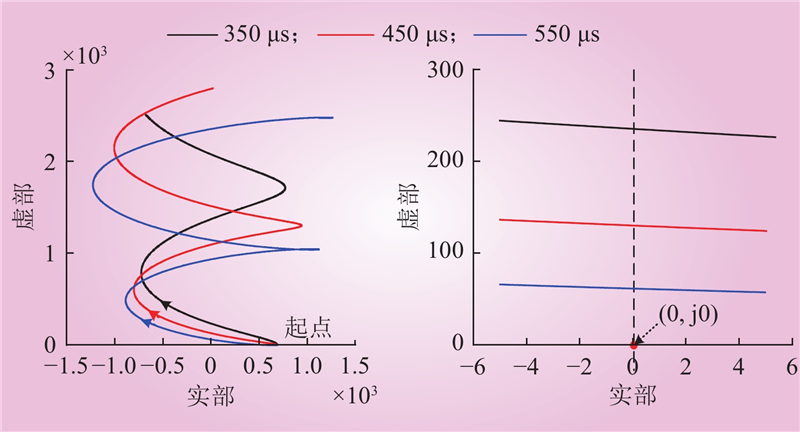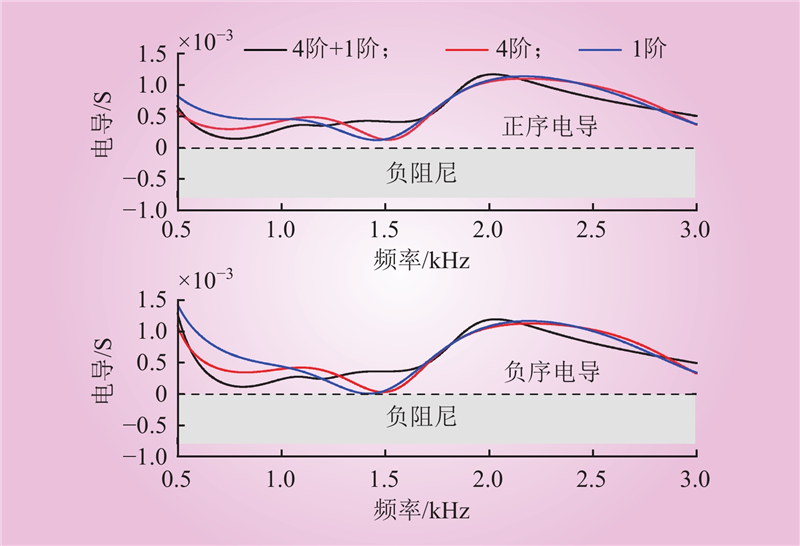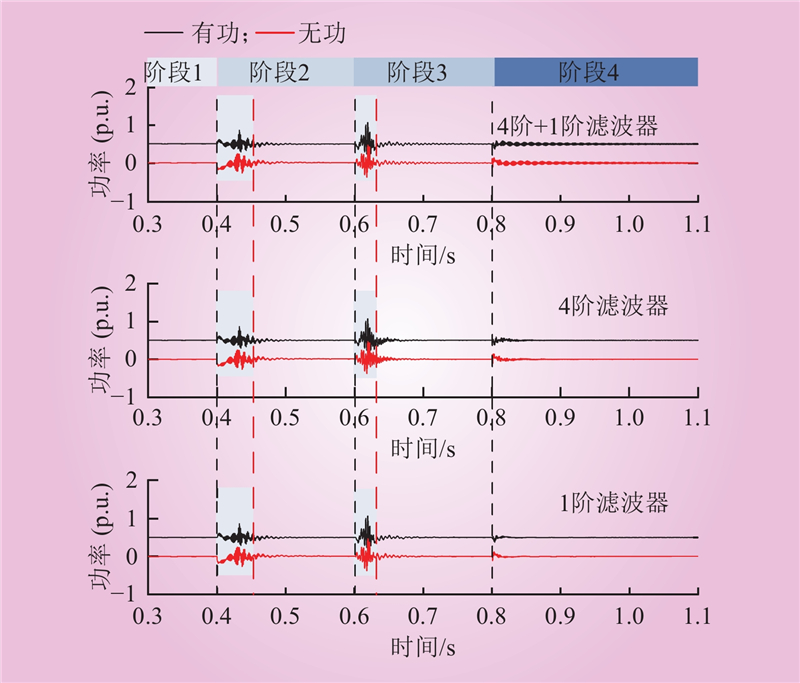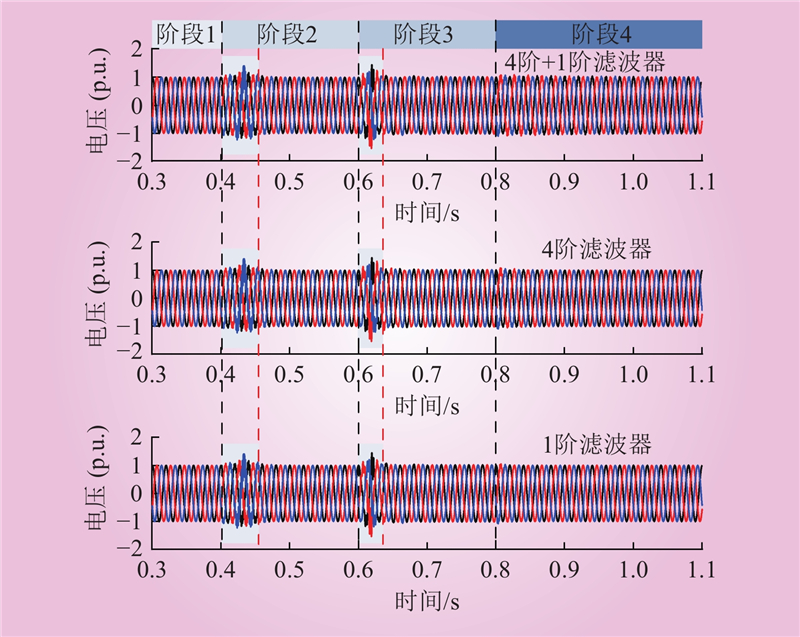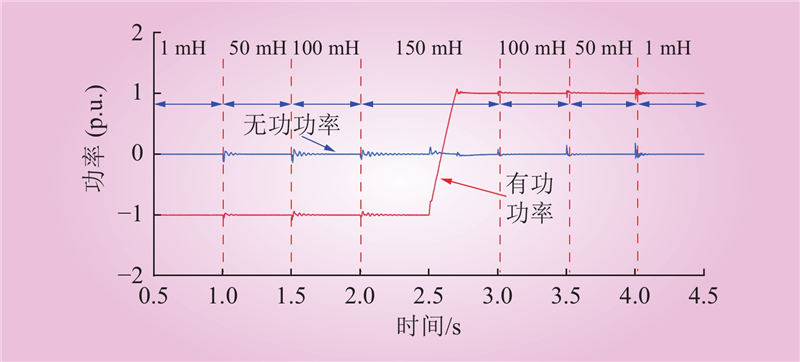| 1 |
金雪芬, 季建辉, 李兰芳, 等. 面向工程应用的MMC-BESS的SOC均衡控制参数设计[J]. 中国电力, 2023, 56 (11): 168- 176.
|
|
JIN Xuefen, JI Jianhui, LI Lanfang, et al. Parameter design of SOC balance control for MMC-BESS engineering applications[J]. Electric Power, 2023, 56 (11): 168- 176.
|
| 2 |
冯铮, 李慧, 范新桥, 等. 含微分平坦控制的柔直输电系统稳定性分析[J]. 电力科学与技术学报, 2024, 39 (4): 42- 52.
|
|
FENG Zheng, LI Hui, FAN Xinqiao, et al. Stability analysis of flexible direct current transmission system with differential flatness control[J]. Journal of Electric Power Science and Technology, 2024, 39 (4): 42- 52.
|
| 3 |
陈继开, 侯文宇, 李浩茹, 等. 一种基于虚拟惯量控制的非故障雷击多端柔直低频振荡平抑方法[J]. 东北电力大学学报, 2023, 43 (4): 10- 19.
|
|
CHEN Jikai, HOU Wenyu, LI Haoru, et al. A non-fault lightning strike multi-terminal flexible low-frequency oscillation suppression method based on virtual inertia control[J]. Journal of Northeast Electric Power University, 2023, 43 (4): 10- 19.
|
| 4 |
彭光强, 黄之笛, 苏蕊, 等. 基于电流注入法的模块化多电平换流器损耗建模[J]. 南方电网技术, 2024, 18 (2): 12- 20.
|
|
PENG Guangqiang, HUANG Zhidi, SU Rui, et al. Modelling of modular multilevel converter loss based on current injection method[J]. Southern Power System Technology, 2024, 18 (2): 12- 20.
|
| 5 |
王柯, 朱海勇, 刘黎, 等. 柔性直流系统联网-孤岛转换控制策略[J]. 浙江电力, 2023, 42 (7): 1- 8.
|
|
WANG Ke, ZHU Haiyong, LIU Li, et al. Control strategy of transition between grid-connected and island operation of flexible DC system[J]. Zhejiang Electric Power, 2023, 42 (7): 1- 8.
|
| 6 |
尹聪琦, 谢小荣, 刘辉, 等. 柔性直流输电系统振荡现象分析与控制方法综述[J]. 电网技术, 2018, 42 (4): 1117- 1123.
|
|
YIN Congqi, XIE Xiaorong, LIU Hui, et al. Analysis and control of the oscillation phenomenon in VSC-HVDC transmission system[J]. Power System Technology, 2018, 42 (4): 1117- 1123.
|
| 7 |
郭贤珊, 刘泽洪, 李云丰, 等. 柔性直流输电系统高频振荡特性分析及抑制策略研究[J]. 中国电机工程学报, 2020, 40 (1): 19- 29, 370.
|
|
GUO Xianshan, LIU Zehong, LI Yunfeng, et al. Characteristic analysis of high-frequency resonance of flexible high voltage direct current and research on its damping control strategy[J]. Proceedings of the CSEE, 2020, 40 (1): 19- 29, 370.
|
| 8 |
杜镇宇, 阳岳希, 季柯, 等. 张北柔直工程高频谐波振荡机理与抑制方法研究[J]. 电网技术, 2022, 46 (8): 3066- 3075.
|
|
DU Zhenyu, YANG Yuexi, JI Ke, et al. High frequency harmonic resonance and suppression in Zhangbei Project[J]. Power System Technology, 2022, 46 (8): 3066- 3075.
|
| 9 |
LI Y F, PANG H, KONG M, et al. Compensation control and parameters design for high frequency resonance suppression of MMC-HVDC system[J]. CSEE Journal of Power and Energy Systems, 2020, 7 (6): 1161- 1175.
|
| 10 |
杜东冶, 郭春义, 贾秀芳, 等. 基于附加带阻滤波器的模块化多电平换流器高频谐振抑制策略[J]. 电工技术学报, 2021, 36 (7): 1516- 1525.
|
|
DU Dongye, GUO Chunyi, JIA Xiufang, et al. Suppression strategy for high frequency resonance of modular multilevel converter based on additional band-stop filter[J]. Transactions of China Electrotechnical Society, 2021, 36 (7): 1516- 1525.
|
| 11 |
陈继开, 孙崇博, 李阳, 等. 多端柔直换流站高频谐振及传播机理分析与抑制[J]. 电力建设, 2024, 45 (2): 26- 36.
|
|
CHEN Jikai, SUN Chongbo, LI Yang, et al. Analysis and suppression of high-frequency resonance and propagation mechanism in multiterminal flexible direct converter station[J]. Electric Power Construction, 2024, 45 (2): 26- 36.
|
| 12 |
李云丰, 贺之渊, 孔明, 等. 柔性直流输电系统高频稳定性分析及抑制策略(二): 阻尼控制抑制策略[J]. 中国电机工程学报, 2021, 41 (19): 6601- 6616.
|
|
LI Yunfeng, HE Zhiyuan, KONG Ming, et al. High frequency stability analysis and suppression strategy of MMC-HVDC systems (part Ⅱ): damping control suppression strategy[J]. Proceedings of the CSEE, 2021, 41 (19): 6601- 6616.
|
| 13 |
杜夏恒, 赫玉莹, 邹文, 等. 跟网型和构网型逆变器的阻抗无源化方法综述[J]. 东北电力大学学报, 2024, 44 (2): 12- 20.
|
|
DU Xiaheng, HE Yuying, ZOU Wen, et al. An overview of impedance passivation methods forGrid-following and grid-forming inverters[J]. Journal of Northeast Electric Power University, 2024, 44 (2): 12- 20.
|
| 14 |
于浩天, 吕敬, 蔡旭, 等. 一种动态性能友好型柔性直流输电系统高频自稳控制策略[J]. 中国电机工程学报, 2023, 43 (9): 3293- 3308.
|
|
YU Haotian, LYU Jing, CAI Xu, et al. A dynamic performance-friendly high-frequency self-stabilizing control method for flexible HVDC system[J]. Proceedings of the CSEE, 2023, 43 (9): 3293- 3308.
|
| 15 |
辛业春, 李尚轩, 王延旭, 等. 基于直流电流反馈的MMC-HVDC系统的中高频振荡抑制策略[J/OL]. 中国电力, 2024 (2024-04-17). https://kns.cnki.net/kcms/detail/11.3265.tm.20240415.1815.008.html.
|
| 16 |
韦超, 林磊, 朱建行, 等. 基于锁相优化的MMC高频振荡抑制方案研究[J]. 高电压技术, 2022, 48 (7): 2805- 2816.
|
|
WEI Chao, LIN Lei, ZHU Jianhang, et al. Research on suppression scheme of high-frequency oscillation of MMC based on phase locked optimization[J]. High Voltage Engineering, 2022, 48 (7): 2805- 2816.
|
| 17 |
ZOU C Y, RAO H, XU S K, et al. Analysis of resonance between a VSC-HVDC converter and the AC grid[J]. IEEE Transactions on Power Electronics, 2018, 33 (12): 10157- 10168.
|
| 18 |
侯延琦, 刘崇茹, 王宇, 等. 柔性直流输电系统高频振荡抑制策略研究[J]. 中国电机工程学报, 2021, 41 (11): 3741- 3751.
|
|
HOU Yanqi, LIU Chongru, WANG Yu, et al. Research on the suppression strategy of high-frequency resonance for MMC-HVDC[J]. Proceedings of the CSEE, 2021, 41 (11): 3741- 3751.
|
| 19 |
彭意, 郭春义, 杜东冶. 柔性直流输电的阻抗重塑及中高频振荡抑制方法[J]. 中国电机工程学报, 2022, 42 (22): 8053- 8063.
|
|
PENG Yi, GUO Chunyi, DU Dongye. Research on medium and high frequency oscillation suppression approach based on impedance tuning in flexible HVDC system[J]. Proceedings of the CSEE, 2022, 42 (22): 8053- 8063.
|
| 20 |
郝为瀚, 谭威, 黄阳, 等. 基于无源阻尼的柔性直流输电系统高频振荡抑制策略[J]. 电工电能新技术, 2023, 42 (3): 23- 31.
|
|
HAO Weihan, TAN Wei, HUANG Yang, et al. High-frequency oscillation suppression strategy of MMC-HVDC based on passive damping method[J]. Advanced Technology of Electrical Engineering and Energy, 2023, 42 (3): 23- 31.
|
| 21 |
刘春震, 徐海亮, 高铭琨, 等. 基于C型滤波器的MMC高频振荡抑制及参数设计方法[J]. 电力系统自动化, 2023, 47 (8): 206- 215.
|
|
LIU Chunzhen, XU Hailiang, GAO Mingkun, et al. High-frequency oscillation suppression and parameter design method for modular multilevel converter based on C-type filter[J]. Automation of Electric Power Systems, 2023, 47 (8): 206- 215.
|
| 22 |
张卿杰, 陆广香, 徐友, 等. 分步曲线拟合的引风机传动模型[J]. 热能动力工程, 2019, 34 (11): 146- 150.
|
|
ZHANG Qingjie, LU Guangxiang, XU You, et al. Transmission model of induced draft fan with step curve fitting[J]. Journal of Engineering for Thermal Energy and Power, 2019, 34 (11): 146- 150.
|
| 23 |
吴滨源, 李建文, 李永刚, 等. 用于谐波劣化分析的并网逆变器阻抗灰箱拟合方法[J]. 电工技术学报, 2022, 37 (4): 942- 953.
|
|
WU Binyuan, LI Jianwen, LI Yonggang, et al. A gray-box fitting method of grid-connected inverters impedance for the analysis of harmonic degradation[J]. Transactions of China Electrotechnical Society, 2022, 37 (4): 942- 953.
|
| 24 |
JI K, CHEN W M, WU X G, et al. High frequency stability constraints based MMC controller design using NSGA-III algorithm[J]. CSEE Journal of Power and Energy Systems, 2021, 9 (2): 623- 633.
|
| 25 |
JI K, PANG H, CHEN W M, et al. NSGA-III based controller parameter design for optimizing impedance of VF controller MMC[C]//2019 4th IEEE Workshop on the Electronic Grid (eGRID). Xiamen, China. IEEE, 2019: 1–5.
|
| 26 |
李辉, 吴优, 谢翔杰, 等. 考虑控制链路延时的风电场经MMC-HVDC并网系统稳定性分析及提升策略[J]. 太阳能学报, 2022, 43 (8): 323- 333.
|
|
LI Hui, WU You, XIE Xiangjie, et al. Stability analysis and improvement method of wind farm grid-connected system via mmc-hvdc considering link delay[J]. Acta Energiae Solaris Sinica, 2022, 43 (8): 323- 333.
|


